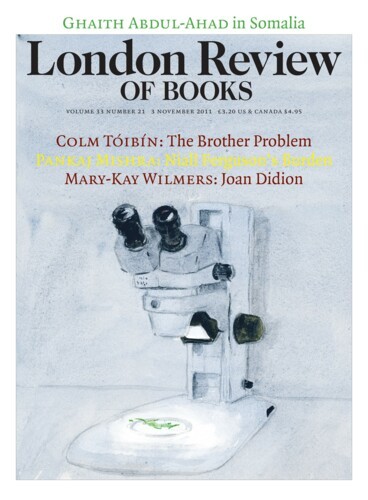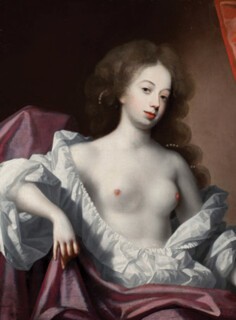The Protectorate was over, the Commonwealth had failed. Charles II entered London on 29 May 1660, his birthday, and began hanging judges and reopening theatres. Tongue firmly in cheek, a royal patent lamented that ‘many plays formerly acted do contain several profane, obscene and scurrilous passages’: the solution was to have women’s parts henceforth played by women, as ‘useful and instructive representations of human life’. During his exile the king had seen women on the stage in France, and he missed them. There was no outcry. And if at first the women weren’t very good (Pepys says they didn’t learn their lines), their appeal was all too obvious. When the first professional English actress (no one knows her name) stepped out as Desdemona on 8 December, the prologue leered:
I saw the Lady dressed!
The woman plays today! Mistake me not;
No man in gown, or page in petticoat;
A woman to my knowledge, yet I can’t
(If I should die) make affidavit on’t.
Do you not twitter, gentlemen?
The First Actresses (at the National Portrait Gallery until 8 January) begins with a painting of Nell Gwyn by the Dutch artist Simon Verelst (c.1680). Her eyes are narrowed in concentration; her breasts spill out of her blouse. There’s also an engraving of her as Venus reclining on a divan while her sons fly over her like Cupids, and – a new acquisition – another Verelst portrait of pretty witty Nell, very pale, hair loose, head cocked, shirt open to the belly. In the 19th century her breasts were painted over for modesty, then uncovered again. The painting was lost, apparently bought for its frame by owners who didn’t know what it was. But there’s no question of it not being Nell: we know her by her nipples. She shares the room with Moll Davis, another actress turned royal mistress, whom Nell supposedly saw off by lacing her cakes with laxatives.
I thought the show might be a rehash of the gallery’s Painted Ladies: Women at the Court of Charles II from ten years ago, but walk through a doorway and you’re in the world of truly professional actresses. The sitters are now conflated with their most popular roles: Miss Rose in the Character of Tom Thumb (1770), Frances Abington as Miss Prue in ‘Love for Love’ (1771), Mary Robinson as Perdita (1781), Dorothy Jordan as Rosalind in ‘As You Like It’ (1787). When they’re not painted in character, they identify themselves as actresses by pointing to books or by clutching musical scores or masks. They sit in full make-up, mainly rouge, and have the same serious half-smile. As the profession slowly glides to respectability, society ladies start having themselves painted in the same style. The Duchess of Devonshire, the Viscountess Melbourne and the sculptor Anne Seymour Damer stand together over a cauldron as the witches in Macbeth by Daniel Gardner (c.1775), women pretending to be actresses pretending to be witches.
Overwhelming the exhibition is a huge copy done by Reynolds’s studio of Sarah Siddons as the Tragic Muse (1784); the portrait shows Siddons sitting on an antique throne like (Reynolds hoped) Joel in the Sistine Chapel, flanked by Aristotle’s Pity and Fear. The signature on the original (now in the Huntington Collection in California) has long faded, but Siddons claimed that Reynolds wrote his name on the corner of her skirt, telling her he wanted to ‘go down to posterity on the hem of your garment’. Burke, Hazlitt, Gibbon tell us she was ‘sublime’, ‘noble’, ‘majestic’, ‘regarded less with admiration than with wonder’. When her characters died on stage, audiences were too distraught to applaud. But here she seems too much the grande dame. Reynolds has her sitting above the clouds, gazing into space. She’s beautiful, but so very dignified that she’s become dull. You look at her and try to guess what she was like on stage from the way she tilts her chin or holds up her arm, but it’s hopeless.
In James’s Tragic Muse, Madame Carré argues that actresses should be ‘ashamed’ of their beauty the way one should always be ashamed of unearned gifts; it has little to do with one’s actual power on the stage, which comes only from work. ‘I don’t care a straw for your handsome girls,’ she says. ‘Bring me the one who is ready to drudge the tenth part of the way Rachel drudged, and I’ll forgive her her beauty.’ Theatrical conquests used to be fleeting; in this show, only the gifts remain.
Send Letters To:
The Editor
London Review of Books,
28 Little Russell Street
London, WC1A 2HN
letters@lrb.co.uk
Please include name, address, and a telephone number.


